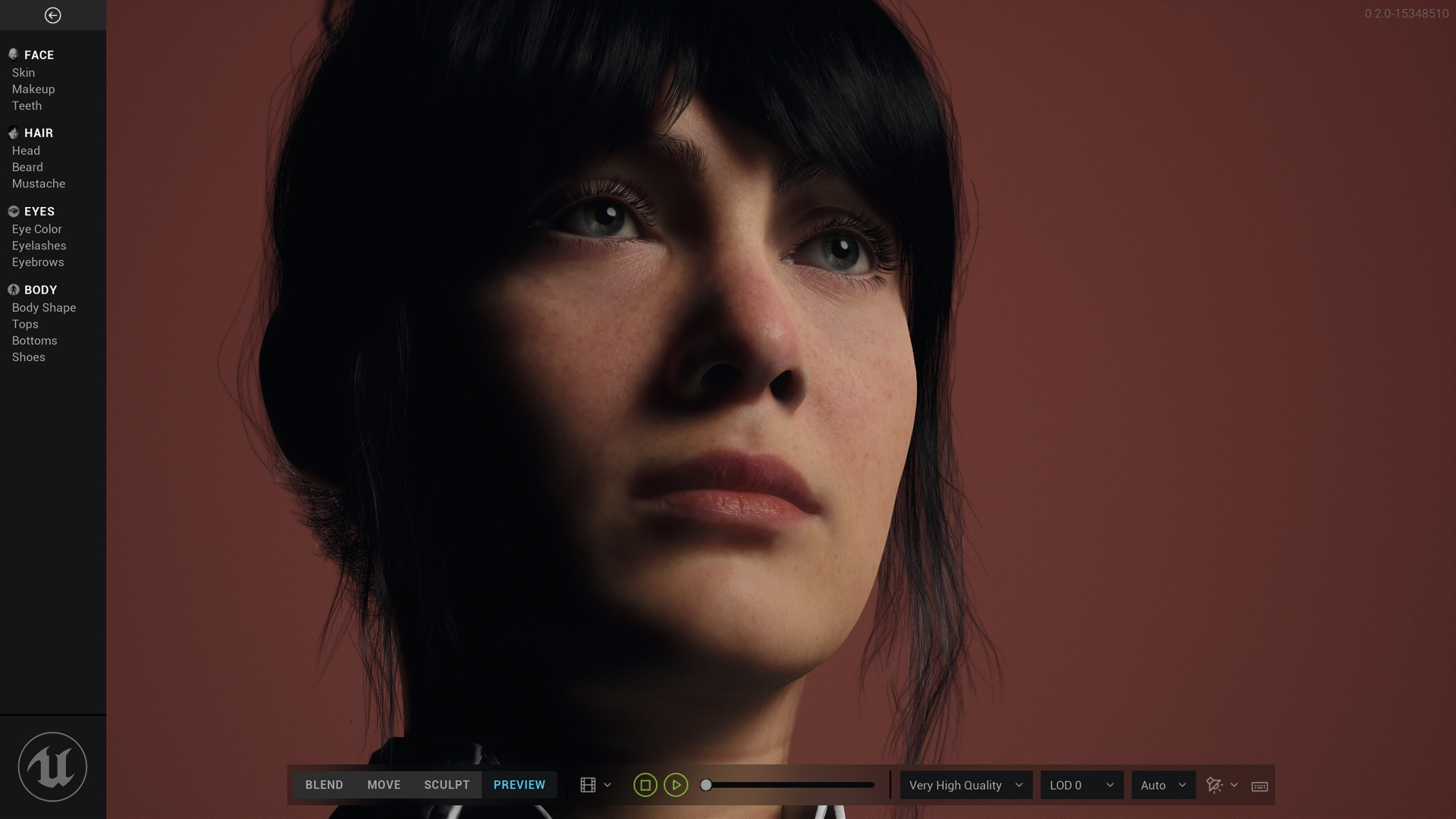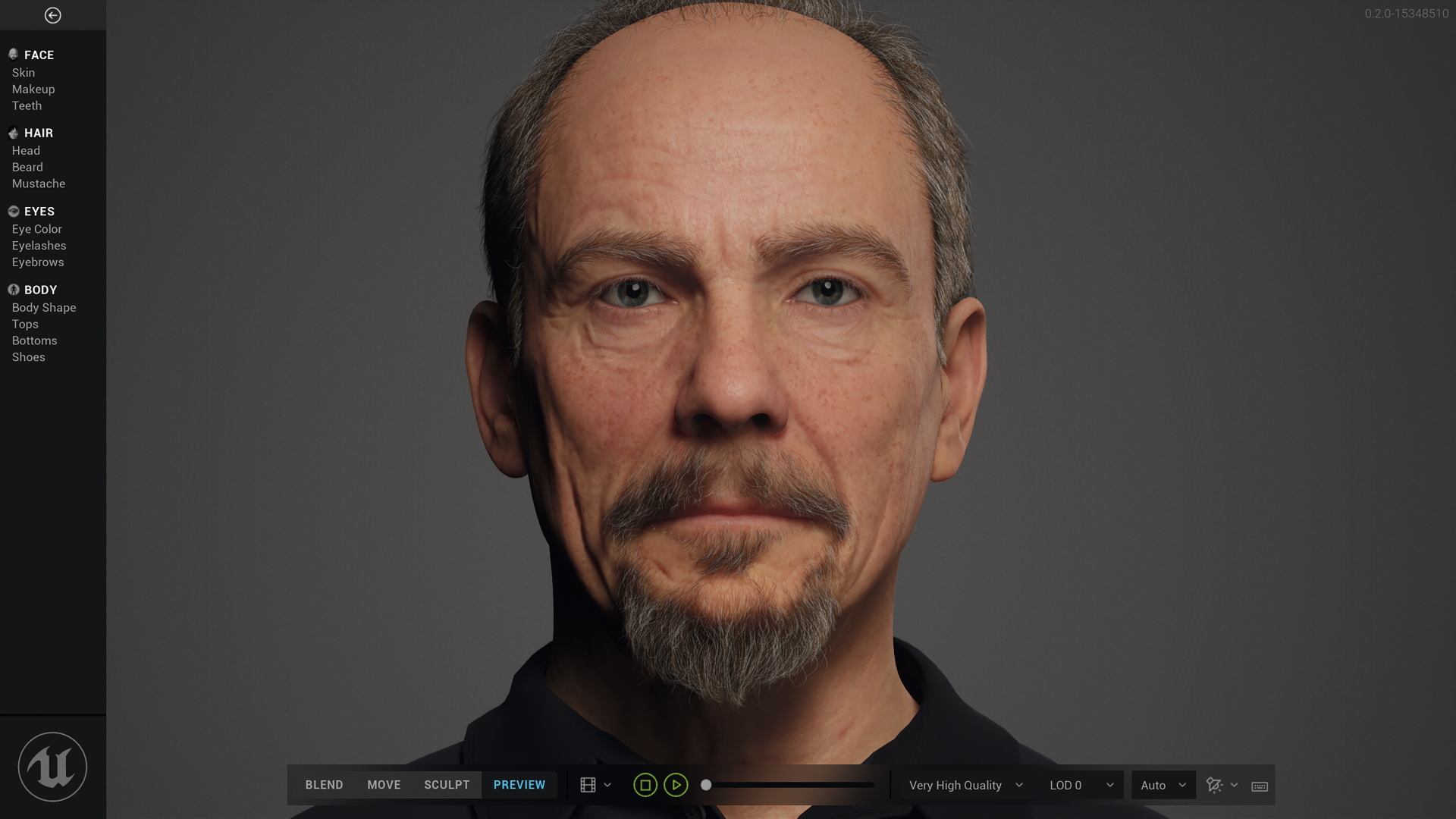Has Epic transformed character creation for good with its new MetaHuman Creator tool?
Epic Games and industry insiders discuss the new tool that will let anybody rapidly create high-quality 'virtual humans'

Epic Games has opened limited early access to MetaHuman Creator, a 3D character-creation tool which has the potential to transform the way character models are produced. The software can rapidly generate unique and extremely high-quality realistic models of people that are fully set up for use in Unreal Engine, where it will be entirely free to use.
"The tool compresses the weeks or months of work it usually takes to create a realistic character into minutes, or however long you wish to put into customising the exact character you want," Vladimir Mastilovic, vice president of Digital Humans Technology at Epic Games, tells us. "Up until now it has taken very sophisticated teams weeks or months to create just one high-quality digital human, and now that massive amount of time and process is being compressed into minutes. That's new for the entire industry, not just Epic."

To prove its claims, in February Epic released two sample characters to demonstrate the fidelity of the 'digital humans' (as Epic calls them) that MetaHuman Creator can output. The ploy worked. "These characters are crazy good, in terms of skin texture, rigging, and ease of use in the Unreal Engine," Guillaume Broche, CEO and creative director of new Paris-based developer Sandfall Interactive, says.
For him, the quality of the sample characters stand above the typical results that come out of today's commonly used 3D character creation tools, including Blender, Fuse, and Reallusion's Character Creator. As you'd expect, the models' character skeletons complement Unreal's control rig, so they're immediately available for hand-animation and motion capture directly in the engine.
Who is it for?


If you want more great long-form games journalism like this every month, delivered straight to your doorstop or your inbox, why not subscribe to Edge here.
Mastilovic maintains that the tool is aimed at all developers. But Broche, an ex-Ubisoft producer and creative director who worked on Might & Magic: Heroes and Ghost Recon: Breakpoint, believes that the developers who will get best use out of it are those like his: small teams with ambitious projects who will be able to fill their games with varied NPCs. "For small teams, to get a level of quality from MetaHuman that's above what most character artists can produce is a pretty fantastic opportunity," he says.
Sandfall, which he established six months ago and is now 16-strong, is working on a fantasy RPG with high production values which he likens in ambition to Hellblade. "We have a focus on narrative, so realistic characters with good facial expressions are very important, so it's a blessing to get MetaHuman now as we're starting full-time production. I hope it doesn't come out too late, because it's always complicated to switch out software in the middle."
Behind MetaHuman Creator are a lot of moving parts, including its browser-based interface, which has a comprehensive suite of character-editing tools and runs on Epic's servers, streaming video to the user via Epic's Unreal Engine Pixel Streaming system. But its biggest, and most important, component is a database of 3D-scanned people, from which the tool will synthesise fresh, entirely credible models at a press of a button.
Weekly digests, tales from the communities you love, and more

"Up until now it has taken very sophisticated teams weeks or months to create just one high-quality digital human"
Vladimir Mastilovic, Epic Games
The database is the product of painstaking scanning of real humans. "It's a carefully supervised process, from the first scans down to last QA checks of the health of the database," Mastilovic says. "It starts with our custom-built scanners and then goes through different teams that manage data preparation, fitting, clean-up, shapes modelling, rigging, texturing, look dev and database integration with the tool." Unsurprisingly, part of the project's ongoing development is not only to expand the library but also to automate the process.
MetaHuman is the culmination of various acquisitions and developments at Epic over the past few years. In 2019, it bought 3Lateral, a specialist in body and face scanning and motion capture which was founded by Mastilovic in Novi Sad in Serbia. And in March 2020 it bought Cubic Motion, a Manchester-based company specialising in facial animation. Both of these companies contributed heavily to the performance capture and animation in Ninja Theory's Hellblade: Senua's Sacrifice, which was released in 2016 and runs in Unreal Engine 4.
In fact, MetaHuman Creator's development has been progressing quietly in plain sight. First there was Meet Mike, presented at the 2017 SIGGRAPH conference by Epic, 3Lateral and Cubic Motion, in which visual-effects writer Mike Seymour conducted realtime 3D-scanned interviews with various industry leaders which viewers could watch in VR. Then, in 2018, Epic presented Siren: The Digital Human and actor Andy Serkis performing lines from Macbeth with an alien face, both also based on realtime performance capture. "Each project has brought us closer to a systematic way of producing digital humans at scale," Mastilovic says.
Thinking big

Scale is the key way to think about what MetaHuman Creator offers developers: it can generate lots of very high-quality realistic human models very quickly. But it's not currently suited for studios with needs outside this spectrum. "At the moment, MetaHuman Creator cannot create stylised and non-human characters," Mastilovic says. "We're looking into this space now, but as it's very early days we'll cover more immediate needs around realistic digital humans, like increasing the range, further improvements to fidelity, and asset workflow improvements."
And even within the specifics of realistic humans, Broche is not sure MetaHuman will be a complete solution. "I don't think it'll completely replace the need for character artists because there are some things MetaHuman probably won't do, like clothes and hair, and unique beards and facial textures," he says. "So it'll probably need an extra pass to make it completely unique and not just the same character as everyone else in the industry, but it's a fantastic starting point."
Within the game industry, then, MetaHuman seems likely to stage a transformative move from the potato-faced NPCs we've seen too often. Subtle physical variations and animation will become standard across a swathe of games. But there was also strong reaction to Epic's announcement from outside of gaming, since it raises new possibilities for other industries that are increasingly using realtime 3D, such as film.

Unreal Engine plays a significant part in the production of The Mandalorian, where it generates realtime scenery on soundstages to provide accurate ambient lighting, and MetaHuman could soon provide a gateway to countless instantly generated photorealistic characters, too. Actors and extras might be quaking at the prospect.
Beyond film, many other industries will relish the chance to access high-quality 3D characters. The sign-language company Kara Technologies, which is exploring translation using realistic human avatars, was quick to demonstrate one of the sample humans using its signing engine. And there are VTubers, a fast-rising category of streamers who perform using motion-captured 3D avatars. MetaHuman models would elevate their work instantly.
Though it still has far to go, MetaHuman is proposing a generational leap in 3D character production towards the long-held ideal of photorealistic virtual humans. It's also another step towards Epic's dominance in realtime 3D production. By making MetaHuman free alongside all the other tools Unreal Engine provides – including its recent acquisition of photogrammetry platform Capturing Reality – Epic is using its financial muscle to make Unreal the inevitable option for new projects over other leading engines, including Unity. MetaHuman represents a profoundly exciting promise for tomorrow's games, then – and the very real spectre of a monopoly over their creation.
This feature first appeared in Edge magazine. For more like it, subscribe to Edge and get the magazine delivered straight to your door or to a digital device.
Edge magazine was launched in 1993 with a mission to dig deep into the inner workings of the international videogame industry, quickly building a reputation for next-level analysis, features, interviews and reviews that holds fast nearly 30 years on.



